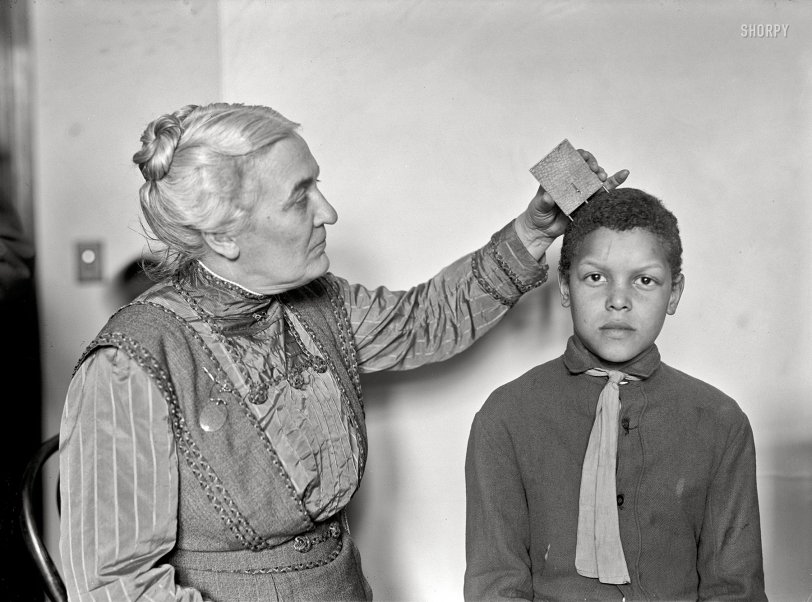


Framed or unframed, desk size to sofa size, printed by us in Arizona and Alabama since 2007. Explore now.
Shorpy is funded by you. Patreon contributors get an ad-free experience.
Learn more.

- Air Quality?
- Sojourner Truth riot
- None were so blind(ed)
- The less famous sister
- Good ol' days?
- Rise and Fall
- Goo Goo Ga Joob
- Ticket Retention
- Not the only one
- Vagaries of War
- Killed by Amtrak
- Back to the Future
- Wanted --
- If you can't stand the light
- Centralized Traffic Control, I believe
- What's really happening
- Heckuva remote control!
- Sometimes — Things Go Bump!
- I SEE THE LIGHT
- Union Switch and Signal Company
- Get That Light Out Of My Eyes
- Eggs. Eggs. Eggs. The Egg Man is Here!
- Foreboding caption
- Famous Hollywood faces
- Not just S&P
- re: Those things in the jar
- Up In Smoke
- Medical Smoking
- Quick fix
- A Quink Comment
Print Emporium
Dr. Clark: 1914

Washington, D.C., 1914. "Dr. Margaret V. Clark." Seen here possibly measuring something. Harris & Ewing Collection glass negative. View full size.
Be very still
I don't know what she is measuring but I believe it would be best to remain very still while she is doing it.
Blue Book Iowan
From the 1914 Blue Book of Iowa Women:
Dr. Margaret Vampel Clark of Waterloo was born at Pleasant Ridge, Lee county, Iowa. She is the daughter of John Christian Vampel and Clara Sandganger. She received her early education in the public and private schools, receiving her classical education in the University of Wisconsin. Her professional education was received at the Woman's Medical College of New York Infirmary, and Hahnemann Medical College of Chicago. She took post-graduate work in London, Berlin and Vienna. She was ever an ambitious and conscientious student, and as a result is a woman of broad education, as well as having unusual professional knowledge and skill.
Making the Grade
In her home state of Iowa, Dr. Clark and Mrs. Mary T. Watts achieved notoriety by coming up with a supposedly objective formula for grading children based on certain physical attributes. According to a 1913 article in the Woman's Home Companion, her formula included a "cephalic index," measured this way: "multiply width of head by 100 and divide by length. . . . 80 to 85 cephalic heads are preferable." I wonder if her formula gave women extra credit if they took on the appearance of a founding father.
Context Missing
We know nothing of the context of the photo, so for all we know she could be an admirably modern doctor of 1914, indignantly demonstrating the pseudoscientific nonsense of the previous century.
Phrenology
The only thing she could be measuring is skull radius (at the point she's measuring).
Grading on the Curve
The device she's using is for measuring curvature. The outer two pins are rigid and the center is spring loaded. The little indicator shows how much the pin is depressed. These are often calibrated to indicate the radius of a circular curve that would fit the three points.
The big question is why she's measuring the curvature of the boy's skull.
























On Shorpy:
Today’s Top 5